Phone: 812-490-SKIN (7546) Fax: 812-490-1060
4943 Rosebud Lane Newburgh, IN 47630
Proud Allergan® Diamond Status Partner
BOTOX FOR HYPERHIDROSIS
What Is BOTOX®?
BOTOX® is the number one cosmetic treatment in the United States.
Hyperhidrosis is the condition where a person produces excessive perspiration (sweat) beyond what the body needs to control body temperature. Hyperhidrosis is classified as either primary or secondary. Secondary hyperhidrosis (SH) is either caused by another medical condition (menopause, infection, thyroid disorders) or as a side effect of a medication (psychiatric and blood pressure medications). Primary hyperhidrosis (PH) is excessive sweating not caused by another medical condition and is not a side effect of a medication.
Types of Hyperhidrosis
Normal Sweating
Sweating is vital for the regulation of the temperature of the human body. Perspiration keeps the body from overheating by providing a watery fluid that causes cooling when it evaporates off of the skin surface. There are about 3 million sweat glands distributed all over the body.
The vast majority of these glands are called eccrine glands secrete clear, odorless fluid, the main source of evaporative cooling. The rest of the glands are referred to as apocrine glands that secrete a milky fluid of fats and proteins that is less important for body temperature control. The apocrine fluid causes body odor when it combines with the normal bacteria found on the skin.
Eccrine glands are distributed almost all over the body. Apocrine glands are more concentrated and are found mostly in areas where there is a high concentration of hair, namely the armpits (axillary areas), scalp, and the groin.
Secondary Hyperhidrosis
Secondary hyperhidrosis is caused by another medical condition or as a side effect of a medication. This type of hyperhidrosis usually involves the entire body, and is, therefore, also referred to as secondary generalized hyperhidrosis. This disorder, by definition, is secondary to something else and does not exist by itself. SH often causes sweating at night, not common in PH. SH usually starts in adulthood as one would expect since it happens secondary to causes most common in adults.
Many medical conditions can cause excessive sweating. Some of the more common causes include menopause, Parkinson’s disease, infectious diseases that cause fever, thyroid disorders, diabetes, alcoholism, some cancers, and pregnancy. With the exception of feverish infections and menopausal “night sweats,” most patients with any of these conditions do not develop secondary hyperhidrosis.
The International Hyperhidrosis Society provides an extensive list of medications that can sometimes cause hyperhidrosis on their web site
(www.sweathelp.org/pdf/Drugs_2009.pdf).
Primary Hyperhidrosis
The vast majority of patients with hyperhidrosis suffer from PH. PH is also called primary focal hyperhidrosis since it is usually localized to specific anatomical locations on the body, as opposed to SH which is usually generalized.
It’s estimated that up to 3% of the world’s population suffers from hyperhidrosis. In the United States, that would amount to 9.5 million patients. Of all hyperhidrosis patients, it is estimated that over 90% suffer from PH.
Adverse Effects
The impact on patients from PH cannot be overestimated. Excessive sweating can adversely affect school, social, professional, and home life. PH patients can produce copious amounts of sweat that literally drips off the hands, fills up the shoes, or drenches shirts. PH is not a minor or cosmetic problem and it needs to be treated as the serious debilitating medical condition that it is. Untreated, the disorder can also cause significant psychological problems.
YOU MAY PAY AS LITTLE AS $0
for Medical BOTOX® treatments with the BOTOX® SAVINGS PROGRAM
Treatment Options
Treatment for SH is usually centered on management of the underlying medical condition or elimination of the medication causing the problem. The treatments for PH are listed below:
Antiperspirants
The first line therapy for hyperhidrosis is the use of antiperspirants. It is important to note deodorants are not the same thing as antiperspirants. Deodorants kill the bacteria that cause body odor when they encounter the fluid produced by apocrine glands. Antiperspirants, on the other hand, reduce the amount of sweat produced.
Antiperspirants may be used on most areas of the body including the feet, hands, face/scalp, back, groin and breasts. Over-the-counter antiperspirants often come in regular strengths and clinical strengths. Patients with PH will need to use the clinical strength products since they are stronger.
Prescription antiperspirants, usually aluminum chloride, may be used under a doctor’s supervision. The most common brand name for this product is Drysol™. It is used daily for 2-3 days until the sweating slows significantly and then it is used 1-2 times per week as needed to keep the sweating under control. The main problem with this treatment is it can be very irritating to the skin or itchy and some patients must discontinue its use.
Iontophoresis
Iontophoresis is a process using water to conduct a mild electrical current through the skin’s surface. The exact mechanism of action of the treatment is not clearly understood, but it is often effective in the treatment of hyperhidrosis of the feet and hands.
This is the second choice for PH of the hands and feet if antiperspirant therapy has failed. Iontophoresis is not an option for the treatment of PH of the face, scalp, groin, or breasts and is difficult to use in the underarms but sometimes works in that area. Iontophoresis treatments are performed 3 times per week in the office for about 3 weeks to see if the treatment is effective. If effective, a prescription will be written for patients to get the machine for home use once or twice per week as needed to keep the PH under control.
At Déjà vu Skin & Health Center we use the Fisher MD2 iontophoresis device in the office and recommend it for home use in those patients who find it effective. There is also a battery-powered device on the market that is not as effective and we do not recommend it.
BOTOX®
The most remarkable treatment available for hyperhidrosis today is the use of Botox. Botox reduces sweating by inhibiting the signals from nerves that stimulate sweat glands to make more sweat. Botox has been approved by the FDA for the treatment of hyperhidrosis in the axillary (underarm) areas. Botox has also been used to treat hyperhidrosis of the feet, hands, face, scalp, groin, back and under the breasts. The treatment is highly effective for most patients and the benefit often lasts for 6-9 months.
At Déjà vu Skin & Health Center, we have used Botox for axillary PH for over 10 years. We have never had a treatment failure or any significant side effects from the treatment. A single treatment lasted over 3 years in 1 patient and the patient with the shortest response gets treated every 2½ months. We have great success with the treatment and patients consistently consider it the best option for their disease.
Botox injections are usually well tolerated in the underarm areas but they can be very painful in other areas especially in the hands and feet. Dr. Manley and our nurses have attended the Master Class in Hyperhidrosis Care and Practice Efficiency sponsored by the International Hyperhidrosis Society. In this course, we learned how to successfully treat the scalp, groin, forehead, back, breasts, hands and feet with Botox with minimal pain to the patient.
Insurance Coverage
In general, most insurance companies, not all, cover office visits for hyperhidrosis. We always pre-certify Botox and iontophoresis treatments before we perform them.
Botox is not a first line treatment for hyperhidrosis and will only be approved by insurance plans if there is documentation of the failure of topical antiperspirants. Some plans also require failure of an oral drug. Since Botox is only approved by the FDA for the treatment of hyperhidrosis of the underarms, many insurance companies will not pay for its use in other areas. We will write a letter of medical necessity to help patients get coverage if there is a chance that the insurance company may pay.
The sooner you make your first appointment the sooner effective treatment can be started. At Déjà vu Skin & Health Center we have experience treating hyperhidrosis and we understand how terrible the condition can be.
Call for an appointment today.
Eliminate Addional Hospital & Surgery Center Charges
We are a small, private practice located in Newburgh, Indiana. We consult and treat with Botox® right here in our own office. Call 812-490-SKIN now for more information, or to setup your Complimentary Consultation.

Find us listed on the International Hyperhidrosis know sweat society!
Call Us Today!
Phone: 812-490-SKIN (7546)
Fax: 812-490-1060
Visit Us!
4943 Rosebud Lane
Newburgh, IN 47630
In the same building as Primary Care Plus+ & Evansville Regional Vein Center

